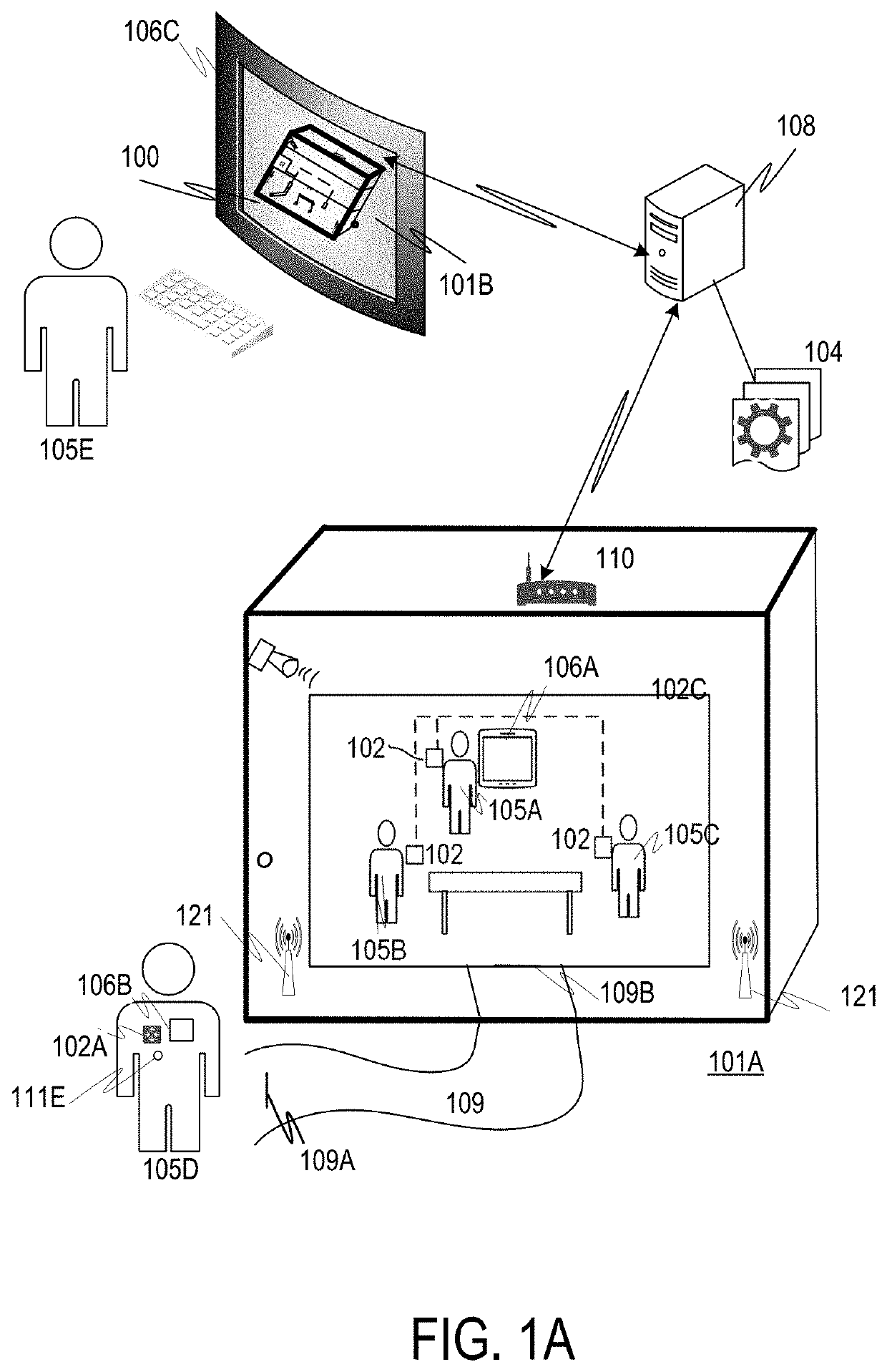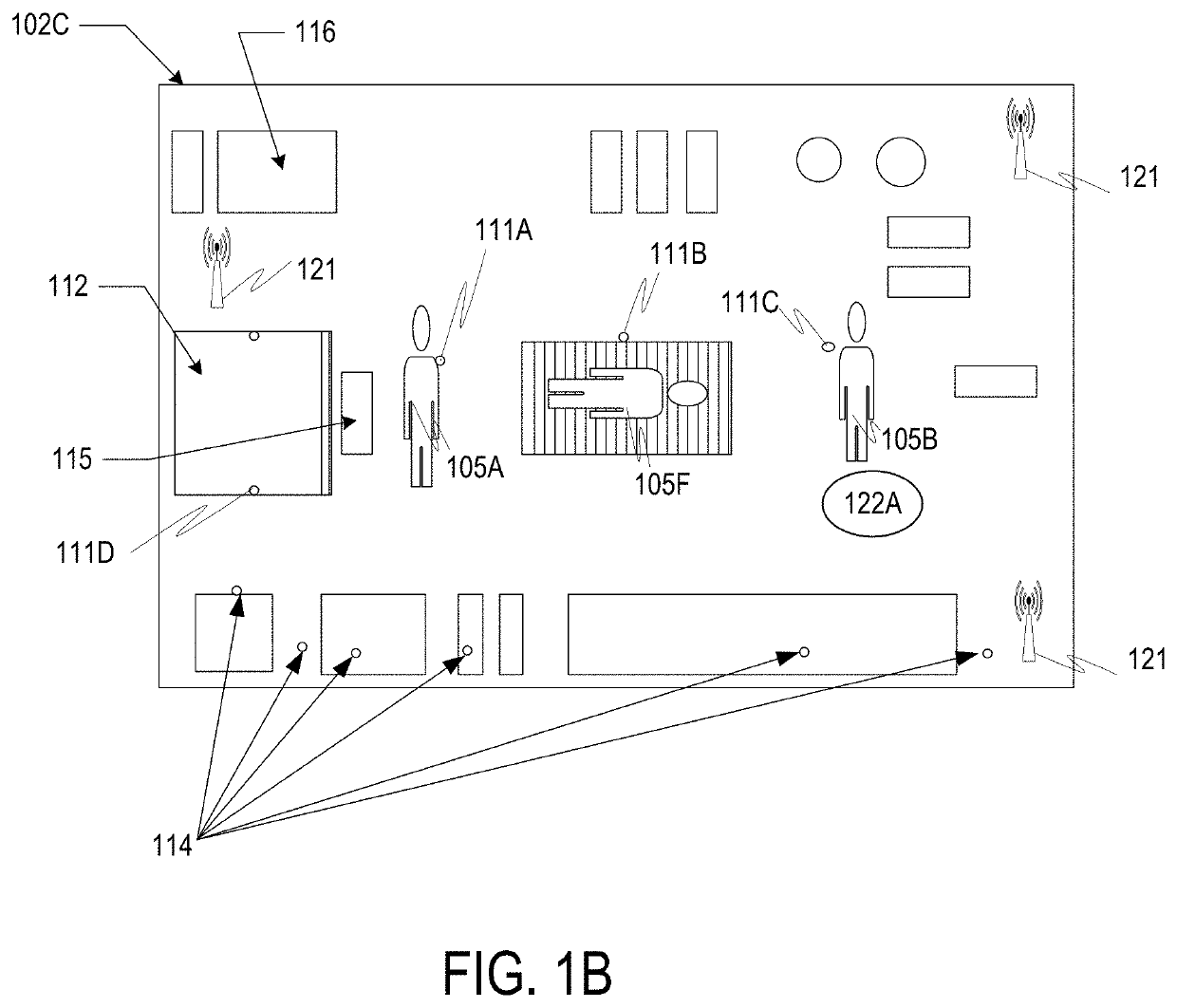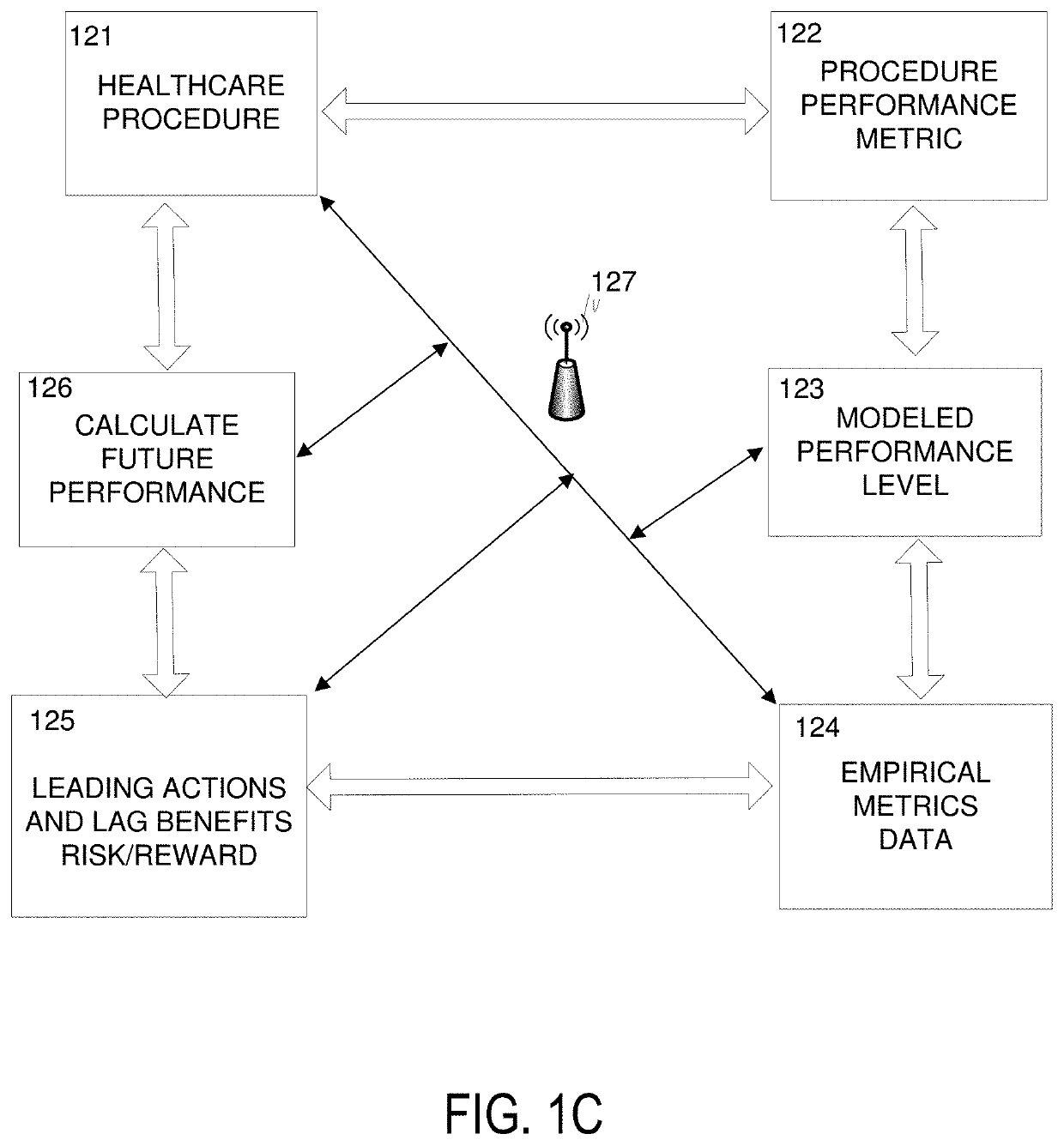Methods and apparatus for healthcare facility optimization
a technology methods, applied in the field of methods and equipment for optimizing healthcare facilities, can solve the problems of little or nothing done to apply ai to the provision of healthcare, specialized equipment and training required to use wireless position determination equipment, and the lack of systems and equipment to implement efficient coordination in hospitals and other treatment centers. to achieve the effect of improving the accuracy of relative location determination
- Summary
- Abstract
- Description
- Claims
- Application Information
AI Technical Summary
Benefits of technology
Problems solved by technology
Method used
Image
Examples
Embodiment Construction
[0079]The present invention provides for improved Healthcare Facilities equipped with wireless transceivers that communicate with Nodes to provide location and orientation of one or more of HCPs; equipment and resources and in some embodiments, a direction of interest of an HCP or other Agent via the operation of one or both of triangulation of Nodes with reference point transceivers; and a spatially self-verifying array of Nodes.
[0080]According to the present invention, a position and orientation of one or more of: doctors, nurse, technicians, transport personnel, or other persons associated with healthcare (sometimes referred to herein as a “healthcare provider” or “HCP”) are tracked. In addition, conditions within the Healthcare Facility are automatically quantified. Healthcare activities are scheduled and tracked based upon the location and orientation of the HCPs and quantified conditions of one or both of Healthcare Facility resources and equipment.
[0081]The present invention ...
PUM
 Login to View More
Login to View More Abstract
Description
Claims
Application Information
 Login to View More
Login to View More - R&D
- Intellectual Property
- Life Sciences
- Materials
- Tech Scout
- Unparalleled Data Quality
- Higher Quality Content
- 60% Fewer Hallucinations
Browse by: Latest US Patents, China's latest patents, Technical Efficacy Thesaurus, Application Domain, Technology Topic, Popular Technical Reports.
© 2025 PatSnap. All rights reserved.Legal|Privacy policy|Modern Slavery Act Transparency Statement|Sitemap|About US| Contact US: help@patsnap.com



